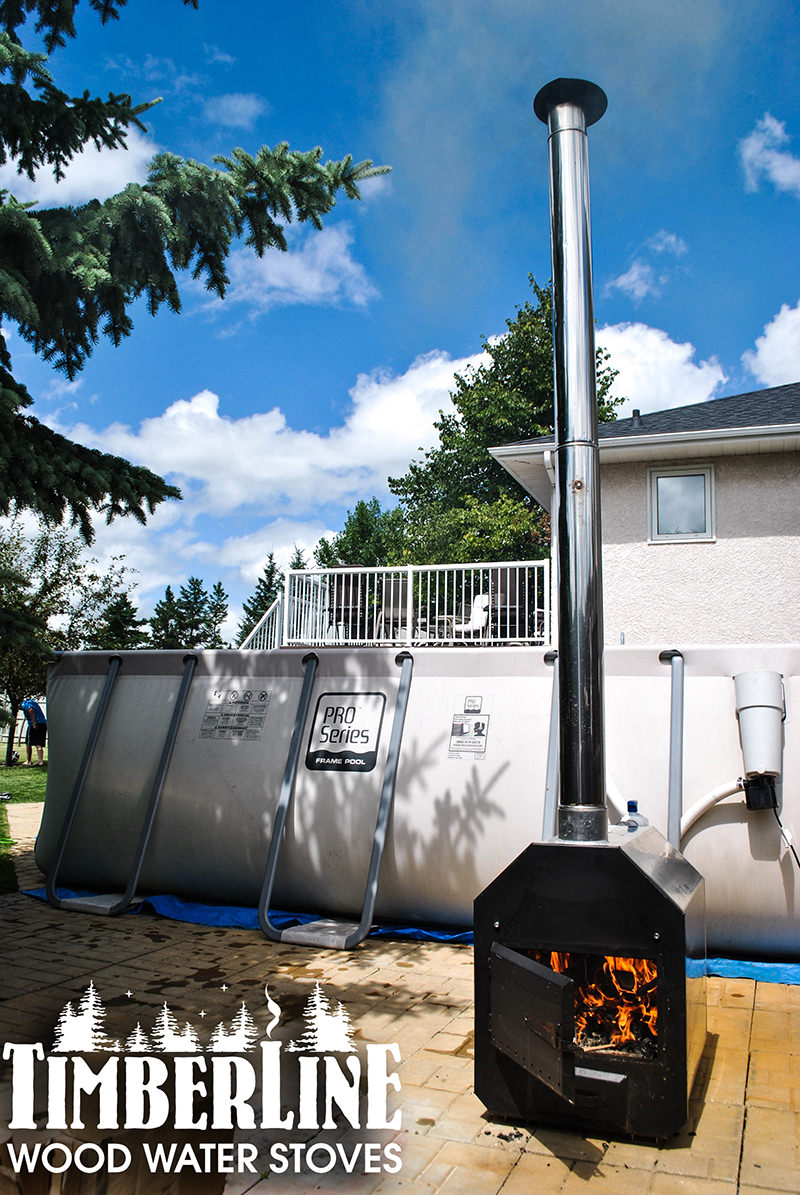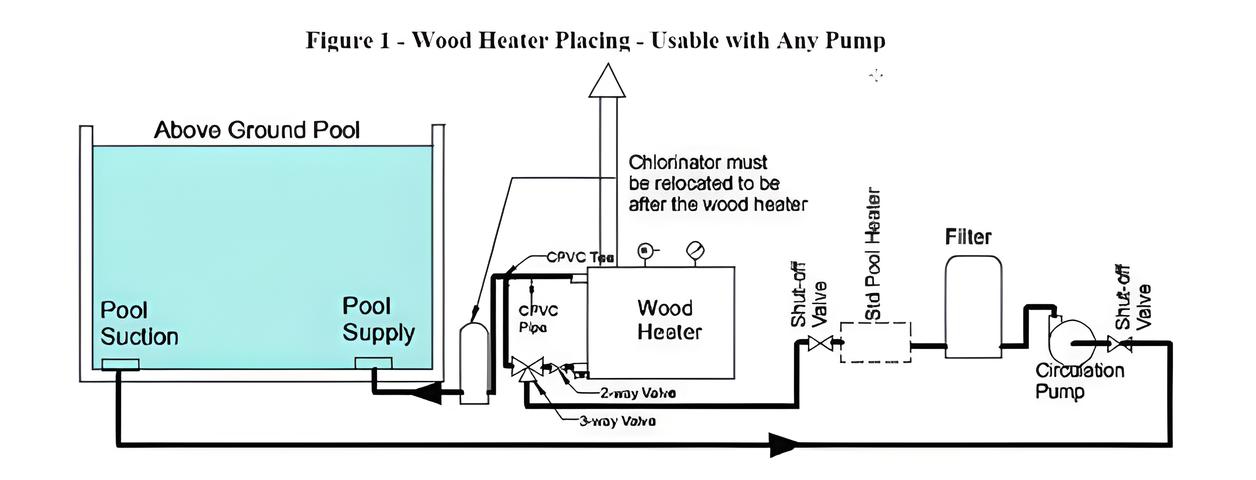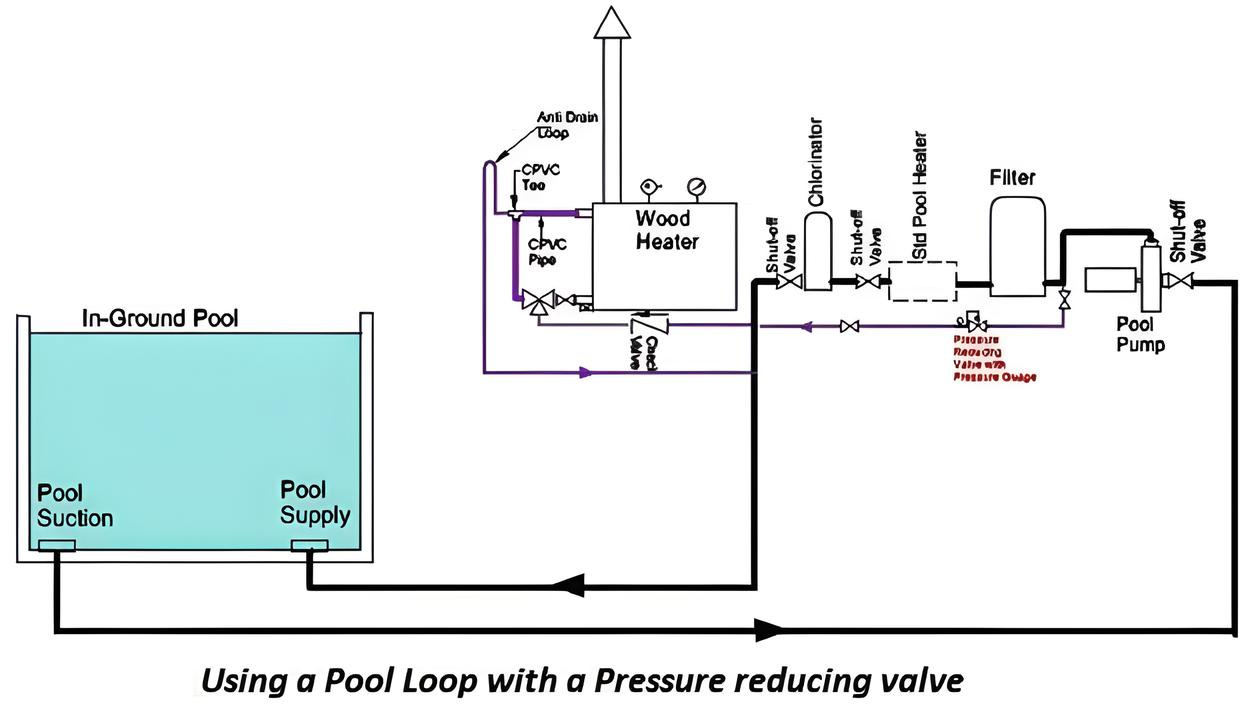-
Your shopping cart is empty!
Wood Fired Pool Heater and Pool Pump

A wood fired pool heater is a great way to extend the swimming season and save on heating cost while enjoying warm pool water. Most pools have a pump system that draws water from the pool and then though a heater (optional) and filter back to the pool. If a chlorinator is added to the pool, the stainless-steel wood fired heater must be before the chlorinator not after. The wood water stove is designed to operate at a Max .75 BAR or 11 PSI. We recommend normal operating pressure should be 8 PSI or less. Some pool pumps can deliver over 40 PSI so caution is required when installing a heater in a pool loop to ensure the pressure of the pool will not damage the heater. It is recommended that you review the pump curve publication for the pool pump to ensure it is not going to produce damaging pressure. As an example, a Max-E pool pump will produce 40 PSI at 0 GPM.
All or our wood fired pool heaters come standard with a pressure relief valve. This valve is a safety valve should the heater ports ever be blocked. This valve will not save a heater from overpressure in a pool loop as there is a much higher flow rate in a pool compared to the small opening of the pressure valve.
It is important when locating the wood fired pool heater to make sure it is on the low pressure side. This is usually found after the sand filter as there is a very large drop in pressure after the sand filter. It should be noted that most sand filters also have a bypass valve. When by passing the sand filter for service the pressure of the pool system will increase significantly, potential damaging the wood stove. For that reason, you should ensure the wood water stove is also bypassed so it does not receive any spike in operating pressure when doing any service work.

Pressure Reducing Valve

To be sure that pressure is adequately reduced on a pool we recommend using a pressure reducing valve. This ensures that the operating pressure into the pool heater will not exceed the safe limits. A Pressure reducing valve will drop the pressure to a safe useable pressure and can be adjusted so that you are always operating under 11 PSI. This will eliminate any spikes that can happen when a pump is first turned on. When installing a pressure reducing valve you will need to create a bypass so that the normal pool operating pressure can still be maintained. A pressure reducing valve is placed on a bypass loop that comes either after the pump or after the filter. It then Tee’s back into the pool loop to dump the heat into the water. When using a wood fired water heater with a pool we always recommend using a pressure reducing valve. Only when a small circulation pump exists such as some above ground pool will it be safe to operate without reducing the pressure.





